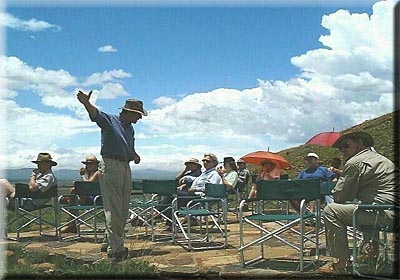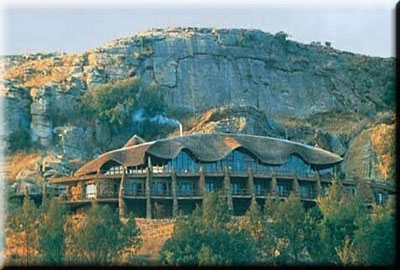THE ANGLO ZULU WAR OF 1879
BY
ROBERT GERRARD FRGS
THE BATTLE OF ULUNDI
4th July 1879
The front rank of the British square at Ulundi consisted of five Companies of the 80th Regiment, four ranks in depth, with two of the Gatling guns in the center of the front rank.
The left side of the square consisted of eight Companies of the 90th Light Infantry and four Companies of the 94th, in two ranks.
The right side consisted of eight Companies of the 13th and four Companies of the 58th, in two ranks.
The rear side consisted of two Companies of the 94th and two Companies of the 21st, in two ranks.
Twelve Royal Artillery guns were positioned in the corners of the square and along the sides.
Lieutenant Chard, with a Company of Royal Engineers, and Major Ben Gough’s 2nd Battalion of the NNC and the band of the 1st/13th were in the center of the square surrounded by fifty wagons and carts bearing engineering tools, ammunition and medical supplies. The bandsmen would act as medical orderlies and distribute ammunition once the battle commenced.
On the flanks of the square rode General Sir Redver Buller’s mounted force, eight hundred and ninety-nine men, including a Squadron of 17th Lancers and Troop of the 1st Dragoon Guards.
As the Advance was ordered the band struck up and played the various regimental marches of the Infantry Regiments present. The British Grenadiers, the Royal Gathering of the Grahams, and the 2nd/21st marched with their Regimental Colours displayed. Regimental officers and NCO’s bellowed orders ensuring the advancing formation maintained its dress.
By 8.00am they were halfway across the Mahlabathini Plain. The FLH were about one thousand yards ahead of the square and had set fire to a couple of vacant kraals and the smoke from these fires hung in the air, and the plain was still littered with the dead of the previous day’s skirmish. Amongst the dead lay the remains of Trooper Pearce and Raubenheim, both had been disembowelled, but Raubenheim had died a painful death. He’d been scalped, and his genitals, nose and right hand had been cut off.
As Buller and the FLH crossed the Mbilane Stream, where the goat herders had been seen the previous day, the iNgobamakhosi Regiment rose out of the grass ahead of them and thousands of warriors appeared from various areas of concealment around the enormous plain and moved forward in silence, totally surrounding the square, which had been called to a halt and ordered to face out, whereupon those in the left, right and rear of the square had turned to face outward and were ordered to fix bayonets.
The FLH initially tried to provoke one Zulu Regiment after another into an early assault by halting, and forming a line, and firing a volley into the Zulus infront of them, as Buller had done at Khambula. Then those in the square heard the rattling of the assegais up against their shields and the deep throated war cries from all around them and the FLH retreated back into the square, as twenty thousand warriors advanced steadily towards the square. These were the warriors who had fought and survived Isandlwana, Rorke’s Drift, Gingingdhlovu, and Khambula, plus thousands of young and old who had been summoned to defend the nation. The iSangqu; uThulwana, uMxapho, uDloko, uMcijo; uDududu; Ntsukamngeni; amaKhwenkwe Regiments and uNdi Corps.
As the Zulu assault from all sides of the square got to within fifteen hundred yards of the square the Royal Artillery opened fire and began shelling them with shrapnel. As the shells exploded Zulu bodies were seen hurled into the air and dropped to the ground to be run over by others as they rushed towards the silent bayoneted Martini Henry rifles that they had learnt to hate.
Then at four hundred yards all hell erupted. The Martini’s and Gatling guns opened fire killing the frenzied warriors in their hundreds. But the charges continued, death was everywhere, bodies littered the ground around the square.
Some Zulus took cover amongst the rocks and grass, and fired their rifles at those in the square. Generally their aim was too high, but some bullets struck home killing or wounding a man or a horse.
Lt. General Lord Chelmsford and his staff rode round the inside of the square behind the lines of Infantry, watching the carnage that was taking place, but only occasionally suggesting to an Infantry officer or an NCO that they should concentrate their fire power on a gathering of Zulus, that they were able to see from their elevated positions, who appeared ready to charge.
Buller and Evelyn Wood watched from their horses the astonishing bravery of the Zulu warriors. Not one had got within thirty yards of the square, but still others rushed forward over the contorted dead.
Then, in a final bid, the Zulu reserve, led by an Induna on a white horse, charged towards the right rear of the square. Two 9-pounders opened fire, cutting a wide path through the path of their assault and riflemen of the 94th and 2nd/21st fired volley after volley into the approaching force.
Then it was over! The maddened charges ceased and Chelmsford ordered the mounted force out.
The 2nd/21st marched forward a few yards to allow Colonel Drury Lowe to lead the 17th Lancers, followed by the Troop of Dragoons, and Buller, with the remainder of the mounted force, out through the rear of the square. Drury Lowe ordered his men into line abreast and two ranks of the Mounted Lancers formed up with their red and white pennons fluttering from the ends of their lances, and charged. Immediately a Zulu bullet struck Lowe in the back and he fell from his horse, only to discover that the bullet had struck his leather cross belt, saving his life. Although shaken, he promptly remounted and followed his men.
Lieutenant Herbert Jenkins was struck by a bullet in the face smashing his jaw, but he rode on having strapped a handkerchief around his face. The Lancers spitted warriors laying on the ground or grass, or those that tried to outrun the mounted men.
The charge lasted for about a thousand yards, then they pulled up on the edge of a donga when four to five hundred Zulus appeared from the far side of the donga and fired, wounding several, and Captain the Honourable Verney Wyatt-Edgell fell dead. The Lancers spurred their horses into the donga encasing the lance butts into leather sockets on their right stirrup and drew their sabres. For a couple of minutes sabre and assegai clashed, then the rest of the mounted force swung to the left and right of the confrontation they saw ahead of them, surrounding the Zulus who broke and ran. As the last of the warriors disappeared from the plain into the surrounding hills, the Royal Artillery shelled them until it became obvious that no counter attack would occur.
Then the mounted force rode into the King’s kraal. Buller had encouraged them by shouting Who’s to be the first into Ulundi? Beresford put his horse at the wooden and thorn covered upper barrier that surrounded the kraal, and came to a halt in amongst a maze of fifteen hundred huts spread over an area of ninety acres. Captain Barker knocked the door of Cetshwayo’s palace down and burst in, hoping to capture the King, but the hut was empty. Leaving the kraal ablaze, the mounted force returned to the Infantry who had already started to march back to the White Mfolozi and Fort Nolea.
The battle of Ulundi had only lasted forty minutes. The heroism these Zulus had displayed had been awesome but the Zulu nation had been defeated leaving about two thousand Zulus dead.
Two British officers and fifty-four soldiers had been killed, and eighty-seven wounded.
Once the force had returned to Fort Nolea, Archibald Forbes of the Daily News gathered his belongings and set off for Landman’s Drift, the nearest telegraph office. By the following afternoon he’d covered almost a hundred miles with two horses and despatched a telegram, a copy of which Sir Garnet Wolseley received at Fort Pearson on the Lower Drift on the afternoon of 5th July.
Chelmsford had regained his dignity in defeating the Zulu army at Ulundi. All he now wanted to do was to get his wounded back to Pietermaritzburg, and he and his staff officers back to England, as quickly as possible.
Although Wolseley had congratulated him upon his victory, he thought the message consolidatory. On 9th July he telegraphed Wolseley his resignation. And on the 27th he sailed out of Durban for England with Evelyn Wood and Redvers Buller accompanying him, and Wolseley was left with the task of capturing the Zulu King and to draw up the peace settlement.
Rob Gerrard FRGS creating the scene and the atmosphere.
Rob Gerrard FRGS, the resident historian at ISandlwana Lodge, relates events of all battles Anglo Zulu War with passion and knowledge as if he had been there. themselves have limited interest, but brings characters involved on both sides to life relating information found in trunks archives, his audience is spell-bound.
For permission to use all, or any part, of text, maps or pictures, contact Robert J. Gerrard at foxzulu@saol.com.
Copyright © Robert J. Gerrard 2003
